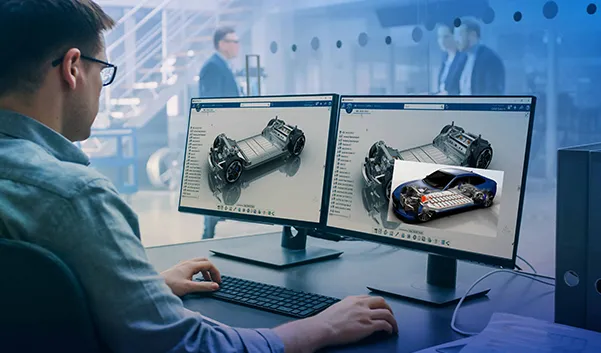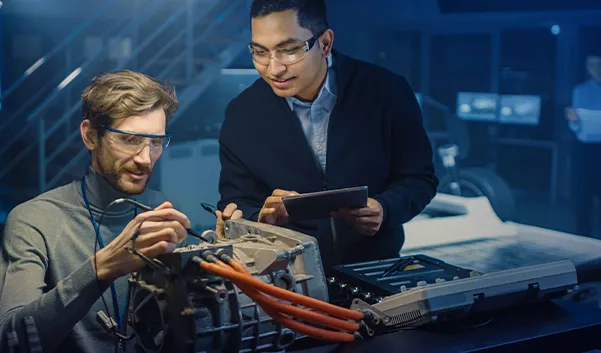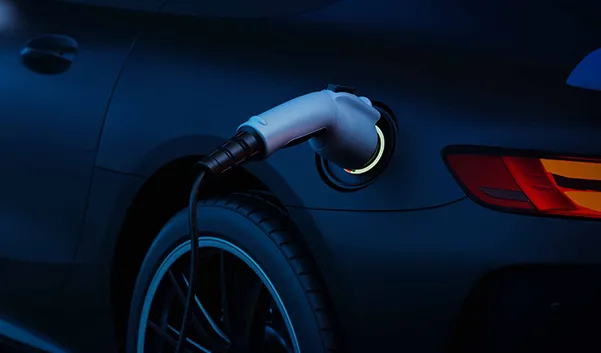Powering Smarter Battery Recycling With Digitalization
Sustain the electric vehicle boom by scaling up cost-effective and durable battery recycling with virtual twin technology on a unified platform.
Scaling Up Sustainable Battery Recycling for the Electric Vehicle Boom
By 2030, at least 1.2 million tons(1) of lithium-ion batteries will reach end-of-life. Are your battery recycling capabilities primed to extract the most out of these spent packs?
The International Energy Agency predicts that more than 145 million(2) electric vehicles (EVs) will hit the roads by 2030. Not only that, OEMs are pressured to deliver EVs with a lower carbon footprint by 2050. However, as the challenge of sustainable EVs grows, so does the pile of spent lithium batteries that once powered those cars. Faced with the shortage and price increase of the components, OEMs and battery manufacturers are boosting their recycling process to recover materials from the returned packs to build new batteries.
Improve the Way You Recover and Recycle
Ready to tame the complexity of battery recycling? Discover how virtual twin technology on a unified platform can help you extract valuable materials safely while lowering the carbon footprint.
Challenges of the Rapidly Expanding Global Battery Market
The global battery market is rapidly expanding. Indeed, the lithium-ion battery demand is expected to grow by about 27% annually between 2022 and 2030(3). But challenges remain:
Regulatory pressure
Authorities are implementing the Digital Product Passport for Batteries, which calls for batteries traceability into the entire lifecycle while mandating higher collection and material recovery rates and recycled components in new batteries.
Finite materials
Mining precious materials like lithium, nickel and cobalt is energy-intensive and takes up a lot of resources and time while often contributing to severe climate impact in South America and Africa's national reserve areas.
Battery recyclability
Most batteries are not designed for recyclability, so recyclers must navigate complex designs, technologies and chemistries that make disassembly costly, time-consuming and energy-intensive.
Digitalize Towards a Low-Carbon Future
When equipped with the right digital capabilities, companies can safely recycle batteries while conserving valuable materials and avoiding waste — from the transportation of spent batteries and disassembly of harmful components to the production of new packs.
The bottom line? Virtual twin technology can help optimize how batteries are reused, remanufactured and recycled while minimizing the environmental footprint. In a digitalized battery value chain, companies can:
- Optimize end-of-life
- Redefine processes
- Strengthen circularity
Optimize end-of-life
A spent EV pack holds about 70 to 80% charge and can be reused to power streetlights or even energy storage systems (ESS). This type of reuse can extend battery life for up to 10 years. But to determine its viability for a second life, companies need to accurately assess the battery’s state of health. By leveraging the virtual twin on a unified platform, companies can gain full traceability to monitor their battery usage and predict which pack will reach end-of-life first.
Redefine processes
It costs more to recycle batteries than to mine more lithium to make new ones. Since large-scale, cheap ways to recycle batteries are lagging, only about 5% are recycled globally, meaning the majority end up as waste. With virtual twin technology, companies can simulate the disassembly and recycling processes based on battery types, technologies, designs and chemistries — and recover materials with the highest quality and the least resources.
Strengthen circularity
A circular economy for lithium batteries ensures responsible hazardous waste disposal through better collection methods and reduces dependency on traditional raw material supply chains. By optimizing the lifecycle through the virtual twin on a unified platform, OEMs and battery manufacturers can close the loop from end-of-life to the supply of raw materials.
It’s essential to take the entire battery value chain into account. By bringing together multidisciplinary teams to infuse desired outcomes from the beginning, the 3DEXPERIENCE platform enables OEMs, battery manufacturers and recyclers to look at how they can do things differently while meeting sustainability and compliance objectives.
Lithium-ion batteries are ubiquitous in everyday life. It’s time to unpack the challenges and opportunities in battery recycling and power the industry towards a circular economy.
1 Source: "Lithium batteries – 1.2m tons ready for recycling by 2030” by PV Magazine (November, 2019)
2 Source: "Global EV Outlook 2024” by IEA
3 Source: McKinsey Battery Insights Demand Model, 2022
FAQ About Recycle Batteries & Lithium Battery Recycling
Related Content
Made to Last With Better Waste Reduction
Learn how companies can circulate products by optimizing waste reduction with virtual twin technology in order to move towards a circular economy.
Digital Product Passport
The Digital Product Passport enables a system in which every product provides a comprehensive record of its journey, from origin to recycling, supporting the circular economy.
The Next Gear in Battery Development
Tomorrow’s electric vehicles demand a revolution in battery innovation – lighter, more powerful, and more sustainable, delivered at unprecedented scale.
Circular Economy
How circular economy practices can help your business dare to be bold through new business models that preserve the environment for future generations.



